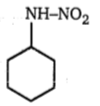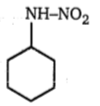A colourless organic compound gave brisk effervescence with a mixture of NaNO2 and dil.HCl. It could be:
(1) glucose
(2) oxalic acid
(3) urea
(4) benzoic acid
एक रंगहीन यौगिक तनु HCl और NaNO2 के मिश्रण के साथ तीव्र बुदबुदाहट देता है। यह हो सकता है।
1. ग्लूकोज
2. ऑक्सैलिक अम्ल
3. यूरिया
4. बेन्जोइक अम्ल
In the compound given below,
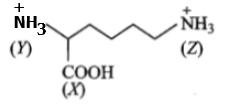
the correct order of acidic nature of the positions (X), (Y) and (Z) is:
(1) Z>X>Y
(2) X>Y>Z
(3) X>Z>Y
(4) Y>X>Z
नीचे दिए गए यौगिक में,
(X), (Y) और (Z) स्थितियों की अम्लीय प्रकृति का सही क्रम है:
1. Z>X>Y
2. X>Y>Z
3. X>Z>Y
4. Y>X>Z
Biuret test is not given by:
(1) proteins
(2) carbohydrates
(3) polypeptides
(4) urea
बाइयूरेट परीक्षण किसके द्वारा नहीं दिया जाता है?
1. प्रोटीन
2. कार्बोहाइड्रेट
3. पॉलीपेप्टाइड
4. यूरिया
Method by which aniline cannot be prepared is
1. hydrolysis phenyl isocyanide with an acidic solution
2. degradation of benzamide with bromine in alkaline solution
3. reduction of nitrobenzene with H2/Pd in ethanol
4. potassium salt of phthalimide treated with chlorobenzene followed by the hydrolysis
with aqueous NaOH solution
वह विधि जिसके द्वारा एनिलीन को तैयार नहीं किया जा सकता है:
1. एक अम्लीय विलयन के साथ फेनिल आइसोसायनाइड का जल अपघटन
2. क्षारीय विलयन में ब्रोमीन के साथ बेन्जैमाइड का निम्नीकरण
3. एथेनॉल में H2/Pd के साथ नाइट्रोबेन्जीन का अपचयन
4. थैलेमाइड के पोटेशियम लवण को क्लोरोबेंजीन के साथ उपचारित करने के बाद, जलीय NaOH विलयन के साथ जल अपघटन द्वारा
Deamination (or) diazotization of n-Bu-NH2 with NaNO2/HCl gives ......... isomeric butene.
1. 2
2. 3
3. 4
4. 5
NaNO2/HCl के साथ n-Bu-NH2 का विऐमीनीकरण या डाइएजोटीकरण कितने समावयवी ब्यूटेन देता है?
1. 2
2. 3
3. 4
4. 5
The type of isomerism shown by C6H5CN and C6H5NC is:
1. position
2. functional
3. enantiomerism
4. tautomerism
C6H5CN और C6H5NC द्वारा किस प्रकार की समावयवता को प्रदर्शित किया जाता है:
1. स्थान
2. क्रियात्मक
3. प्रतिबिंब रूपी समावयवी
4. चलावयवता
Product P in the above reaction is
[2002]
1. 
2. 
3. 
4. 
उपरोक्त अभिक्रिया में उत्पाद P है:
[2002]
1. 
2. 
3. 
4. 
Alkyl halide (RX) on treatement with KCN followed by reduction leads to formation of:
1. RNH2
2. RCH2NH2
3. RH + NH3
4. RCH3 + N2
KCN के साथ ऐल्किल हैलाइड (RX) को उपचारित करने के बाद अपचयन कराने पर किसका निर्माण होता है:
1. RNH2
2. RCH2NH2
3. RH + NH3
4. RCH3 + N2
Choose the correct statement from the ones given below for two anilium in:
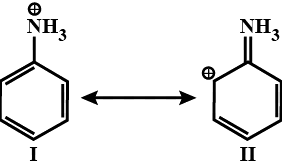
1. II is not an acceptable canonical structure because carbonium ions are less stable than ammonium ions
2. II is not an acceptable canonical structure because it is non-aromatic
3. II is not an acceptable canonical structure because the nitrogen has 10 valence electrons
4. II is an acceptable canonical structure
नीचे दिए गए दो एनिलियम में से सही कथन का चयन कीजिए:
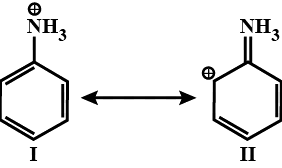
1. II एक स्वीकार्य विहित संरचना नहीं है क्योंकि कार्बोनियम आयन, अमोनियम आयनों की तुलना में कम स्थायी होता है
2. II एक स्वीकार्य विहित संरचना नहीं है क्योंकि यह गैर-ऐरोमैटिक है
3. II एक स्वीकार्य विहित संरचना नहीं है क्योंकि नाइट्रोजन में 10 संयोजी इलेक्ट्रॉन हैं
4. II एक स्वीकार्य विहित संरचना है







